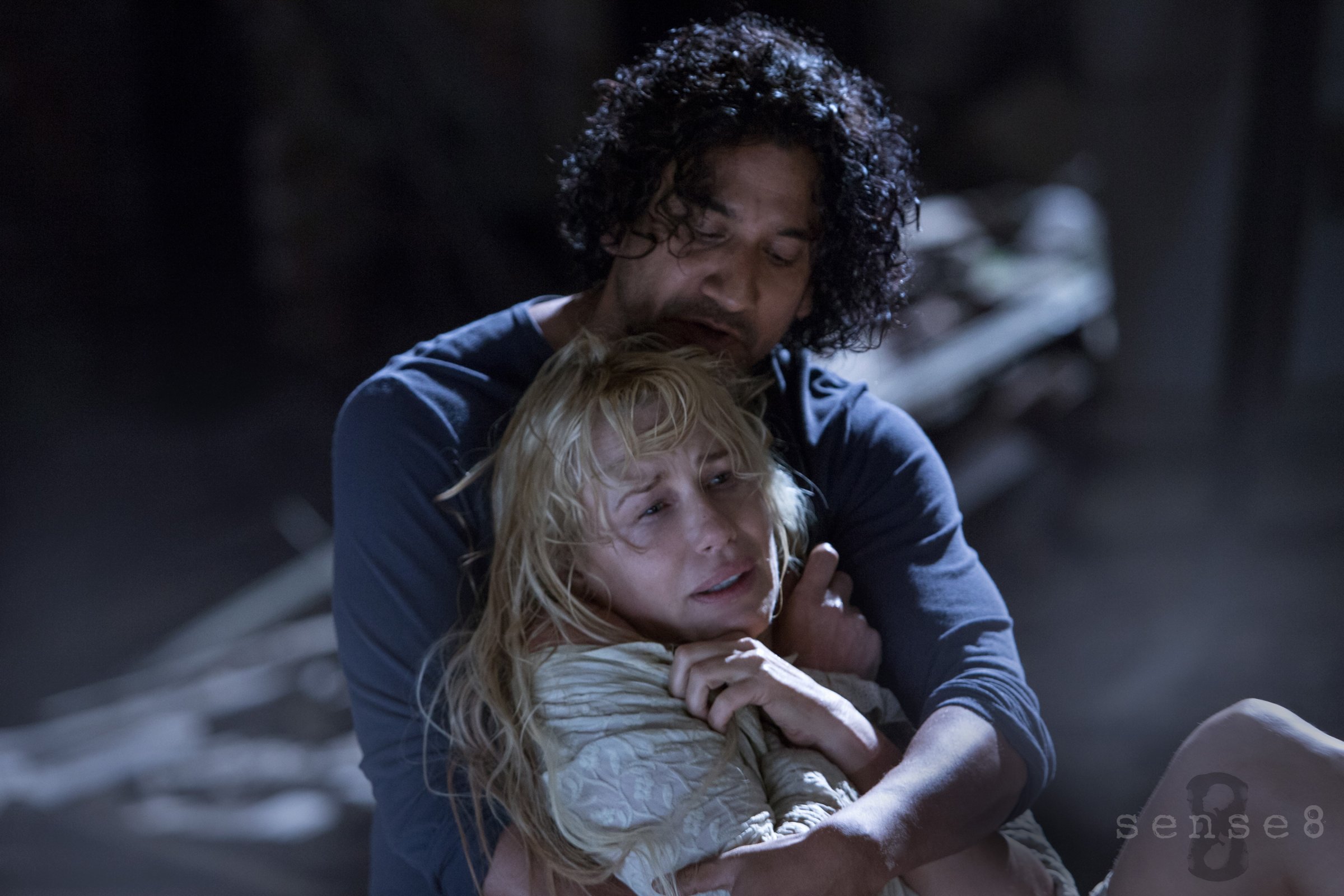
Among the things that challenged viewers of Andy and Lana Wachowski’s 2012 movie Cloud Atlas was figuring out just what the hell it was. Science fiction? Historical fiction? A conspiracy thriller?
You might have just called it “television.” Lost and Heroes became commercial hits by following disparate, connected characters across long expanses of space and time well before Tom Hanks became a pidgin-speaking postapocalyptic goatherd. (And before that, for instance, the interwoven narrative of Steven Soderbergh’s Traffic was based on a British miniseries.) There’s something about that kind of tapestry that lends itself to a larger running time and a smaller screen.
In Netflix’s Sense8 (debuts June 5), the Wachowskis (the Matrix films, Speed Racer) and writer J. Michael Straczynski have ported that ambition over to binge-watch TV, with a globe-spanning series that offers in ambition, action and visual panache what it lacks in coherence, fleshed-out characters and plausible dialogue.
It too, in the simplest sense, is sci-fi. It’s about eight individuals around the globe who come to realize they are psychically connected for reasons that, after the three episodes Netflix screened for critics, are unclear, and threatened by enemies yet unseen. But wait, there’s more! In its eight parallel plots, it’s also a sex farce, a gender-identity melodrama, a martial-arts spectacle, a cop show, a Bollywood-inflected arranged-marriage soap and then some.
Also, as the opening titles roll, Sense8 looks like the most lavish and gorgeous edition of The Amazing Race ever. A saturated-color travelogue unspools at breakneck speed, showcasing the far-flung places the series shot on location: Berlin, Chicago, London, Mexico City, Mumbai, Nairobi, Reykjavik, San Francisco and Seoul. It’s an impressive statement of scope, purpose and resources; you could just as well have shot ultra-HD footage of a burning pile of money.
Before we grab our passports, we awaken in a church, disoriented, with Angel (Daryl Hannah), who is conversing with Jonas (Naveen Andrews, for added Lost imprimatur), a mysterious figure who may be real but appears to be manifesting in her head. Angel is a kind of psychic mother to the eight aforementioned “sensates,” who Jonas says need to be given “a fighting chance” to connect through a “biological synaptic network” because destiny or the universe or something.
But no time for questions! Our world tour begins, visiting a London club DJ, a Chicago cop, a closeted actor in Mexico City, an anxious bride-to-be in Mumbai, a commuter-van driver in Nairobi, a transgender woman in San Francisco, a former criminal in Berlin and a business woman in Seoul–strangers with little in common except youth, low body fat and sudden flashes of visions from one another’s perspectives.
Sense8 asks you to take a lot on hope and patience in the early going. The pilot does little more than set each scene; eventually Jonas begins to appear to some characters, speaking in quasi-spiritual terms like an astral-projecting yoga instructor. (“I think I’m losing my mind,” one tells him. “No, it’s just expanding.” Like that–he serves up everything but the red pill.)
How well you enjoy the episodes may depend–to wax Jonas-esque–on how much you are willing to experience them rather than understand them. While Sense8 is structured as essentially eight parallel “shows”–each with a different genre and tone–none is, individually, especially good on the level of plot (each of them thin) or writing (“When the streets are a jungle, there can only be one king”).
But coming to a Wachowski joint for the dialogue is like going to a steakhouse for the salad. The visual language is what speaks loudest in Sense8, especially as the Wachowskis find novel ways to make the growing psychic connection among the eight leads concrete, as when one character “borrows” another’s hand-to-hand skills in a gasp-worthy cross-cut fight scene. The connections among the stories are more interesting than the stories in themselves, which maybe fits with Sense8’s globalist ethos.
(Though one odd choice, given that, is to have characters speak accented English in the non-English-speaking settings, even as cable series like The Americans regularly use subtitles. It ends up exoticizing characters rather than bringing you closer to them—you end up with, say, a Mexican character speaking to another Mexican character in Mexico City and mispronouncing English words that he would have spoken perfectly in Spanish.)
Late in the pilot, one character praises a singer by saying, “She uses a language of pure emotion,” and that’s true of the early episodes; their music works better than their lyrics. As often as the show made my eyes roll, it sometimes made my eyes pop, a fair tradeoff.
I’m not sure that Sense8 works yet after three episodes (there are 12 altogether), and it exceeds my personal tolerance for One World hoo-hah. But it is at least the kind of big swing that Netflix should exist to take: an immersive experience that neither the movies nor traditional week-by-week TV would probably be right for. The Wachowskis are maximalist artists and streaming TV a maximalist medium. There are worse things Netflix could do than give them 12 hours to binge, binge, binge, whether the end result proves to be gr8 or simply asi9.
More Must-Reads from TIME
- Cybersecurity Experts Are Sounding the Alarm on DOGE
- Meet the 2025 Women of the Year
- The Harsh Truth About Disability Inclusion
- Why Do More Young Adults Have Cancer?
- Colman Domingo Leads With Radical Love
- How to Get Better at Doing Things Alone
- Michelle Zauner Stares Down the Darkness
Contact us at letters@time.com